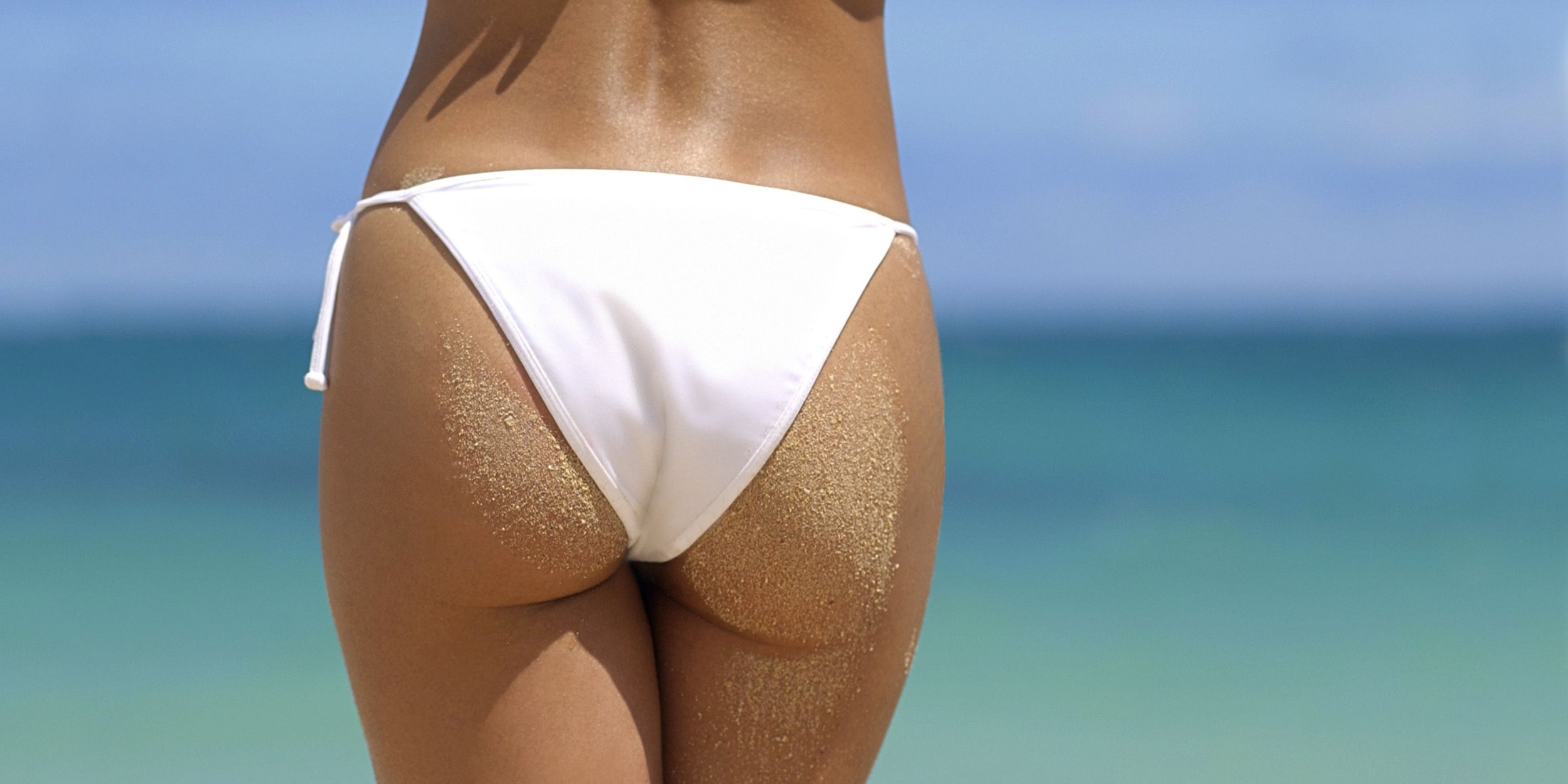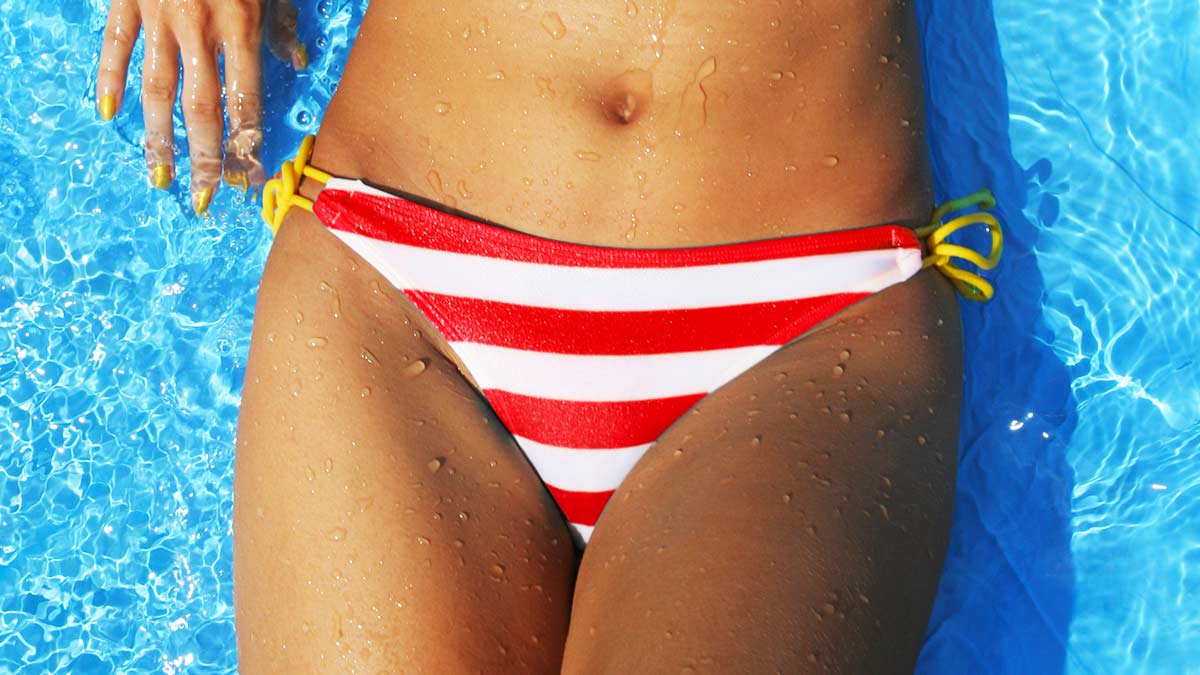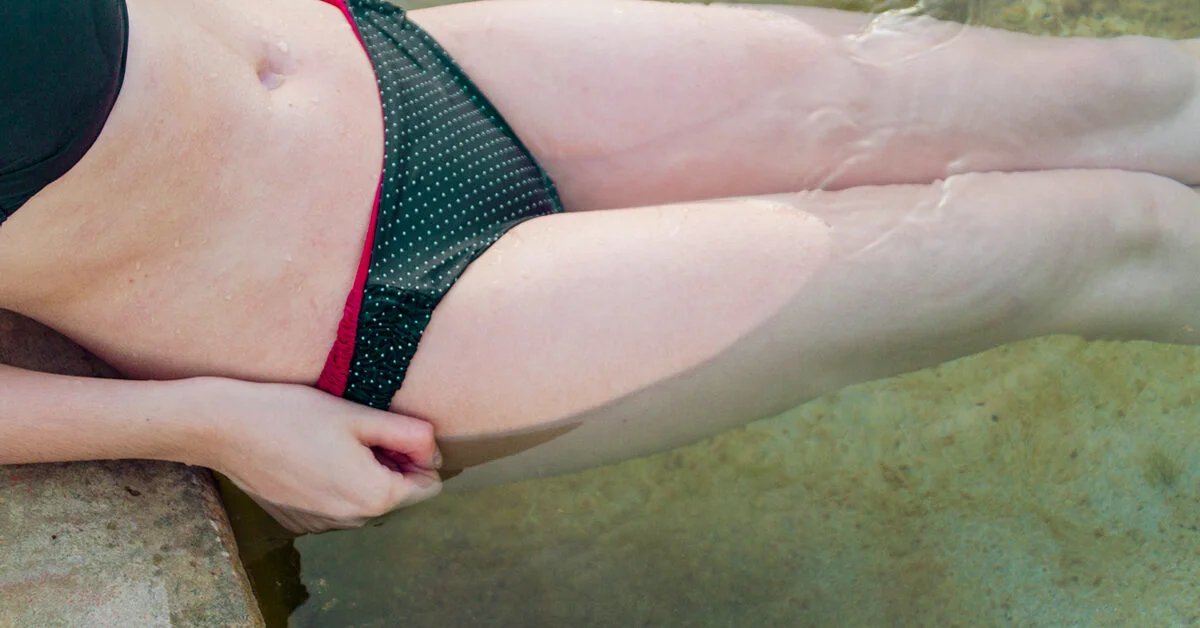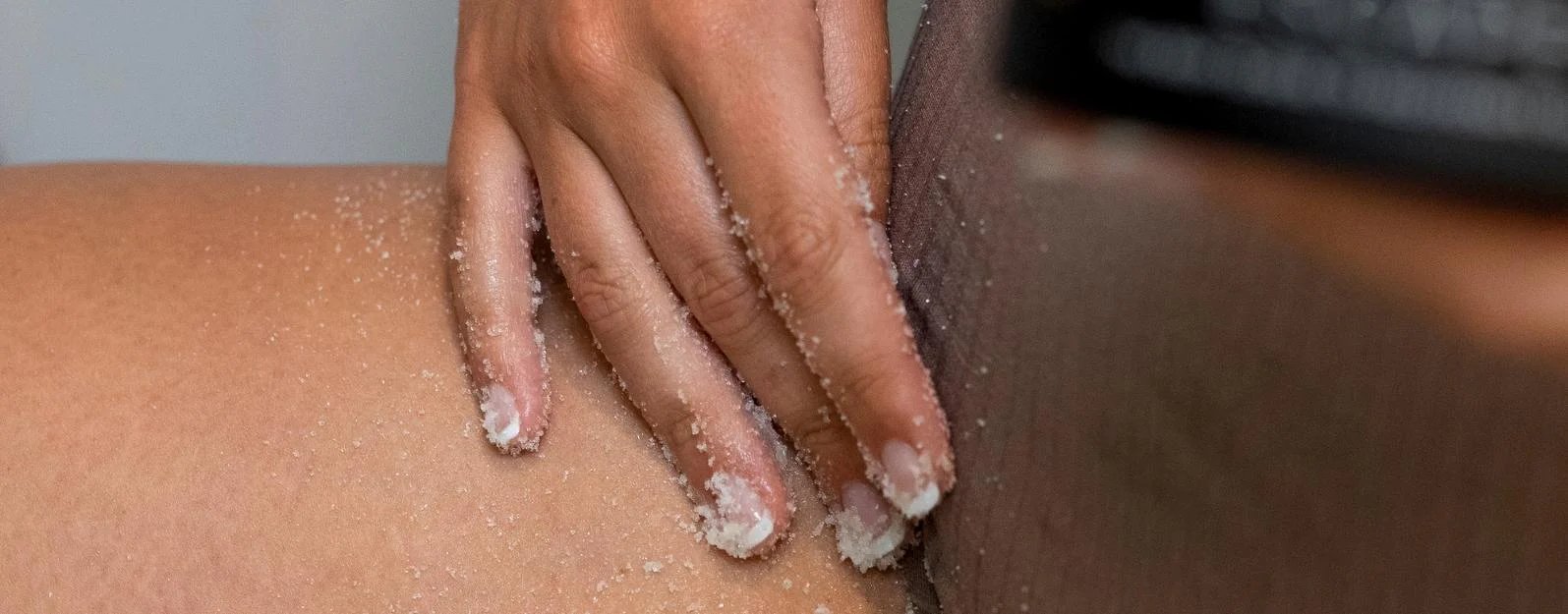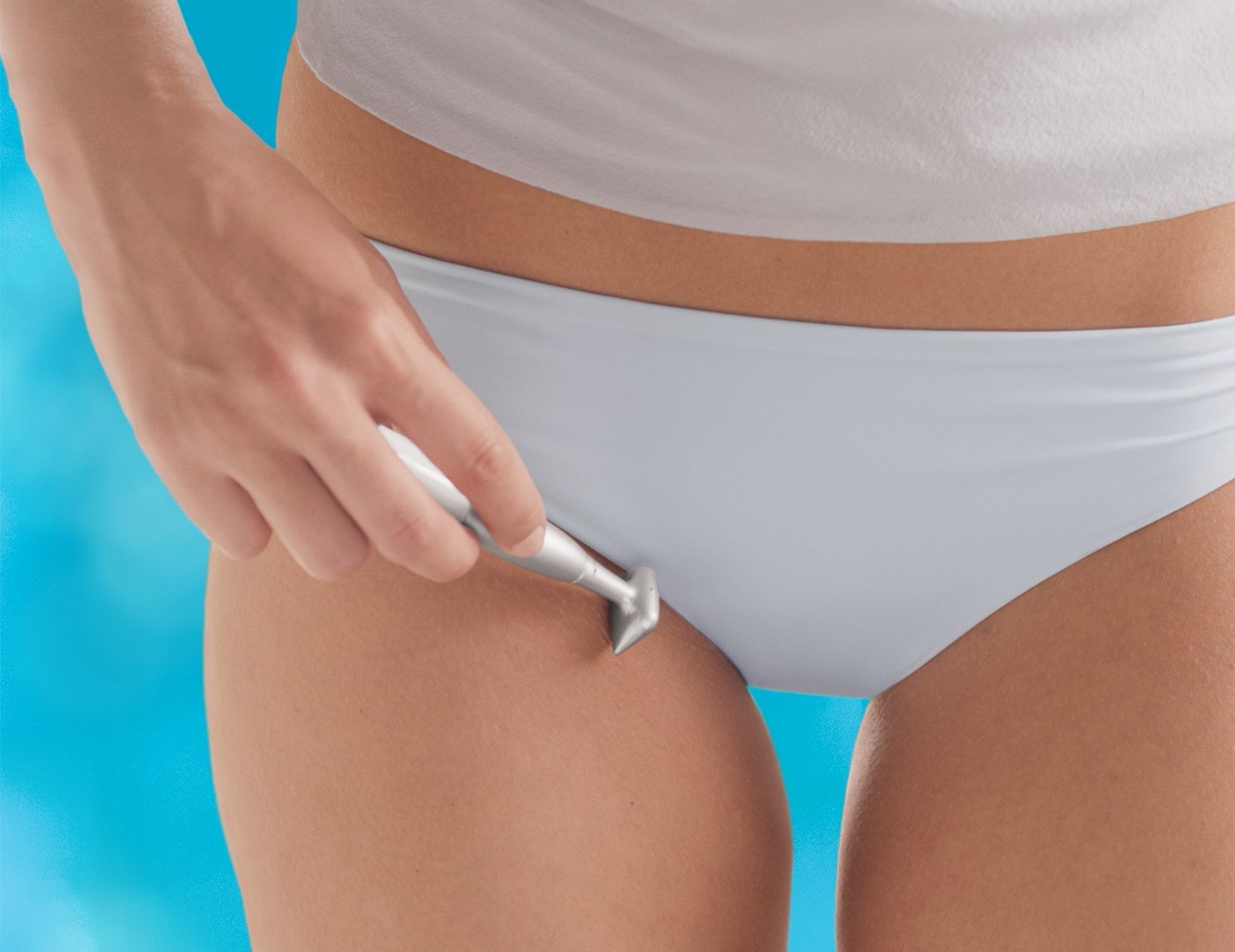Home>How-to Guides>For Women>How To Ease Razor Burn On Bikini Line
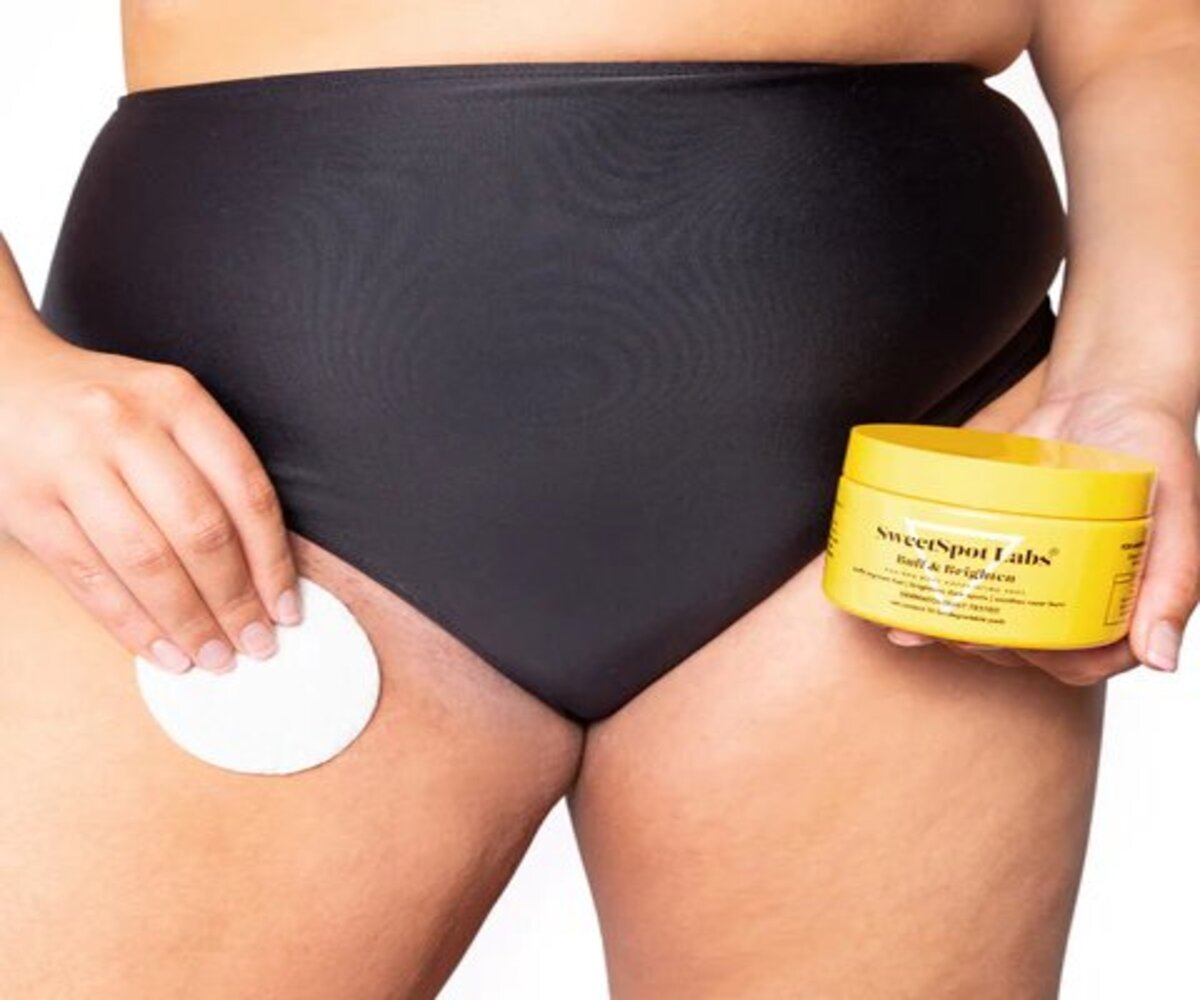

For Women
How To Ease Razor Burn On Bikini Line
Modified: September 23, 2023
Discover effective ways to ease razor burn on the bikini line for women. Say goodbye to irritation and discomfort with our expert tips and remedies.
(Many of the links in this article redirect to a specific reviewed product. Your purchase of these products through affiliate links helps to generate commission for Under-tec.com, at no extra cost. Learn more)
Table of Contents
Introduction
Welcome to the ultimate guide on how to ease razor burn on the bikini line. Whether you’re planning a beach vacation or simply want to feel confident in your swimwear, dealing with razor burn can be both frustrating and uncomfortable. But fear not, because we’ve got you covered with tips, remedies, and expert advice to help soothe and prevent razor burn in the delicate bikini area.
Razor burn is a common issue that many women experience after shaving their bikini line. It manifests as a red, inflamed, and irritated skin, accompanied by itching, burning, and sometimes even small bumps or ingrown hairs. Not only is razor burn unsightly, but it can also be painful and disrupt your daily routine.
Understanding the causes of razor burn is crucial in order to effectively prevent and treat it. One of the main culprits is improper shaving technique. When you rush through the process or use a dull blade, it can lead to irritation and razor burn. Other factors such as sensitive skin, dry skin, and shaving against the grain can also contribute to this pesky problem.
Prevention is key when it comes to avoiding razor burn on the bikini line. By following some simple tips, you can significantly reduce the chances of developing this irritating condition. From proper shaving techniques to using the right products, we’ll delve into helpful prevention strategies that will keep your skin smooth, healthy, and free from irritation.
If you do find yourself with razor burn, don’t worry. There are several effective ways to ease the discomfort and promote healing. In this guide, we’ll explore various home remedies that you can try using readily available ingredients from your kitchen. Additionally, we’ll discuss over-the-counter solutions and when it might be necessary to seek professional help.
Now, without further ado, let’s dive into the world of razor burn on the bikini line and discover how to soothe and prevent this common issue.
Understanding Razor Burn
Razor burn is a common skin irritation that occurs after shaving, particularly in sensitive areas such as the bikini line. It is characterized by redness, inflammation, and discomfort, often accompanied by itching and a burning sensation. Understanding the causes and symptoms of razor burn is crucial in order to effectively treat and prevent it.
When you shave, particularly against the direction of hair growth or with a dull blade, you can cause tiny nicks and cuts on the surface of the skin. These wounds, although small, can lead to irritation and inflammation. In addition, shaving can strip the skin of its natural oils, leaving it dry and susceptible to further irritation.
One of the main symptoms of razor burn is redness, which is a result of increased blood flow to the affected area. This redness may be accompanied by a burning or stinging sensation, as well as itching. In more severe cases, razor burn can lead to the formation of small bumps or pustules, resembling a rash.
It’s important to note that razor burn is different from razor bumps or ingrown hairs, although they can occur simultaneously. Razor bumps, also known as pseudofolliculitis barbae, are caused by hair curling back into the skin after shaving. This can lead to inflammation and the formation of painful, raised bumps.
Now that we have a better understanding of what razor burn is, let’s explore the various causes of this irritating condition. By identifying the underlying factors, we can take steps to prevent razor burn and minimize its occurrence.
Causes of Razor Burn on Bikini Line
Razor burn on the bikini line can be caused by a variety of factors, many of which are related to shaving habits and techniques. Understanding these causes can help you prevent and minimize the occurrence of razor burn in this sensitive area.
1. Improper shaving technique: One of the primary contributors to razor burn is improper shaving technique. Shaving too quickly, pressing down too hard, or using long, dragging strokes can all increase the likelihood of irritation and razor burn. It’s important to take your time, use gentle and short strokes, and let the razor do the work.
2. Dull blades: Using a dull or old blade can also lead to razor burn. When the blade is blunt, it requires more pressure to effectively remove hair, increasing the risk of irritation. It’s essential to replace your blades regularly to ensure a clean, smooth shave.
3. Shaving against the grain: Shaving against the direction of hair growth may provide a closer shave, but it can also cause more irritation and razor burn. Instead, try to shave in the direction of hair growth or across the grain to minimize irritation.
4. Sensitive skin: Some individuals have naturally sensitive skin that is more prone to irritation and razor burn. If you have sensitive skin, take extra precautions when shaving and consider using products specifically formulated for sensitive skin to reduce the risk of irritation.
5. Dry skin: Dry skin is more susceptible to irritation and razor burn. Ensuring that your skin is hydrated and moisturized before shaving can help reduce the risk of irritation. Consider using a moisturizing shaving cream or gel to provide a protective barrier and lubrication.
6. Using harsh products: Harsh soaps, body washes, or shaving creams can strip the skin of its natural oils and cause drying and irritation. Opt for gentle, moisturizing products that are suitable for sensitive skin to minimize the risk of irritation on the bikini line.
By understanding these causes of razor burn on the bikini line, you can take proactive steps to prevent it. In the next section, we will explore essential tips and techniques to help prevent razor burn and keep your bikini line smooth and comfortable.
Prevention Tips
Preventing razor burn on the bikini line is possible with some simple yet effective techniques. By incorporating these prevention tips into your shaving routine, you can minimize the risk of irritation and keep your skin smooth and comfortable.
1. Prepare your skin: Before shaving, it’s important to prepare your skin properly. Start by taking a warm shower or placing a warm towel on the bikini area for a few minutes. This helps to soften the hair and open up the pores, making it easier to get a close shave without causing irritation.
2. Exfoliate gently: Exfoliating the bikini area a day or two before shaving can help remove dead skin cells and prevent ingrown hairs. However, be gentle when exfoliating to avoid further irritation. Choose a mild exfoliating scrub or use a soft brush to gently buff the skin.
3. Use a sharp, clean razor: Using a sharp and clean razor is crucial for preventing razor burn. Dull blades can tug at the hair and cause irritation. Make sure to replace your blade regularly, ideally every 5-7 shaves, and rinse it thoroughly between each stroke to prevent bacteria buildup.
4. Shave with the grain: Shaving in the direction of hair growth or across the grain can help minimize irritation. Avoid shaving against the grain, especially in the sensitive bikini area, as this can increase the likelihood of razor burn and ingrown hairs.
5. Apply a quality shaving cream or gel: A moisturizing shaving cream or gel provides a protective barrier and lubrication, reducing the friction between the razor and the skin. Look for products that are specifically designed for sensitive skin and free of harsh chemicals or fragrances.
6. Take your time: Rushing through the shaving process can lead to nicks, cuts, and irritation. Be patient and take your time to ensure each stroke is gentle and precise. This will not only reduce the risk of razor burn but also result in a smoother shave.
7. Moisturize after shaving: After shaving, it’s vital to moisturize the bikini area to replenish moisture and soothe the skin. Opt for a gentle moisturizer or natural oils that are free of harsh chemicals or fragrances. Avoid products that contain alcohol, as they can further dry out the skin.
8. Avoid tight clothing: Wearing tight clothing immediately after shaving can cause irritation and friction. Opt for loose-fitting, breathable clothing to allow the skin to breathe and heal after shaving.
By following these prevention tips, you can significantly reduce the risk of razor burn on the bikini line. However, if you do experience razor burn, don’t worry. In the next sections, we will discuss various remedies and solutions to ease the discomfort and promote healing.
How to Ease Razor Burn on the Bikini Line
If you find yourself dealing with razor burn on the bikini line, there are several steps you can take to ease the discomfort and promote healing. By following these tips, you can help soothe the irritation and get your skin back to its smooth and healthy state.
1. Cool compress: Applying a cool compress to the affected area can help reduce inflammation and soothe the skin. Simply soak a clean cloth in cold water, wring out excess moisture, and gently apply it to the razor burn for a few minutes.
2. Aloe vera gel: Aloe vera is known for its soothing and healing properties. Apply a thin layer of pure aloe vera gel to the razor burn to provide immediate relief and promote healing. Make sure to choose a product without added fragrances or alcohol, as these can further irritate the skin.
3. Hydrocortisone cream: If the razor burn is particularly inflamed and itchy, you can apply a hydrocortisone cream to reduce redness and alleviate itching. However, it’s important to use these creams sparingly and as directed, as prolonged use can thin the skin.
4. Tea tree oil: Known for its antibacterial and anti-inflammatory properties, tea tree oil can help soothe razor burn and prevent infection. Dilute a few drops of tea tree oil with a carrier oil, such as coconut or olive oil, and apply it to the affected area using a cotton ball.
5. Avoid further irritation: It’s essential to avoid further irritation to the already sensitive bikini area. Refrain from scratching or picking at the razor burn, as this can lead to infection and worsening of the condition. Instead, focus on gentle care and allowing the skin to heal.
6. Wear loose-fitting clothes: Tight clothing can rub against the razor burn and cause further irritation. Opt for loose-fitting attire made from breathable fabrics to minimize friction and allow the skin to heal.
7. Keep the area clean and moisturized: Gently cleanse the razor burn with mild soap and water, then pat dry. Apply a fragrance-free, hypoallergenic moisturizer to keep the skin hydrated and prevent further dryness or irritation.
Remember, healing takes time, so be patient with your skin. If the razor burn persists or worsens after a few days, consult a dermatologist for further evaluation and treatment options.
With these tips, you can effectively ease razor burn on the bikini line and promote healing. However, prevention is always better than cure. In the next sections, we will explore various home remedies, over-the-counter solutions, and when it might be necessary to seek professional help.
Home Remedies for Razor Burn
If you prefer natural remedies, you’ll be pleased to know that there are several home remedies that can help soothe and heal razor burn on the bikini line. These remedies utilize simple and readily available ingredients that you may already have in your kitchen or bathroom cabinet. While they may not work for everyone, they are worth a try to ease the discomfort of razor burn.
1. Coconut oil: Coconut oil is widely known for its moisturizing and antimicrobial properties. Apply a thin layer of organic, unrefined coconut oil to the affected area to soothe and hydrate the skin. Its natural fatty acids can help calm inflammation and promote healing.
2. Oatmeal: Oatmeal has soothing properties that can help calm irritated skin. Create an oatmeal paste by blending rolled oats with water until it forms a thick consistency. Apply the paste to the razor burn, leave it on for 15 minutes, and then rinse off with cool water.
3. Yogurt: The probiotics in yogurt can help restore the skin’s natural balance and relieve inflammation. Apply plain, unsweetened yogurt to the affected area and leave it on for 15-20 minutes before rinsing off with cool water.
4. Cucumber: Cucumber has a cooling and soothing effect on the skin. Slice a chilled cucumber and place the slices on the razor burn for 10-15 minutes. The cucumber’s high water content will help hydrate the skin and reduce redness.
5. Green tea: Green tea is packed with antioxidants that can help reduce inflammation and promote healing. Brew a cup of green tea, let it cool, and then apply it to the razor burn using a clean cloth or cotton ball.
6. Honey: Honey has antibacterial properties and can help soothe irritated skin. Apply a thin layer of raw honey to the razor burn and let it sit for 15-20 minutes before rinsing off with cool water.
It’s important to note that while these home remedies can provide temporary relief from razor burn, they may not work for everyone. If your razor burn persists or worsens, it’s advisable to consult a dermatologist for further evaluation and treatment options.
With these simple home remedies, you can use natural ingredients to help soothe and heal razor burn on your bikini line. However, if you’re looking for over-the-counter solutions, the next section will provide you with options to consider.
Over-the-Counter Solutions
If you’re looking for immediate relief from razor burn on the bikini line, there are several over-the-counter solutions available that can help soothe and heal the irritated skin. These products are specifically formulated to target razor burn and provide effective relief. Here are some options to consider:
1. Topical creams or gels: There are various creams and gels available that are specifically designed to soothe razor burn. Look for products that contain ingredients like aloe vera, chamomile, or witch hazel, as these have calming and anti-inflammatory properties.
2. Hydrocortisone creams: Hydrocortisone creams can help reduce redness, itching, and inflammation associated with razor burn. These creams contain a low dose of corticosteroids and can provide quick relief. However, it’s important to use them sparingly and as directed, as prolonged or excessive use can have side effects.
3. Antibacterial ointments: If your razor burn becomes irritated or starts to show signs of infection, using an over-the-counter antibacterial ointment can help prevent further complications. Look for ointments that contain ingredients like bacitracin or neomycin to help keep the area clean and promote healing.
4. Calamine lotion: Calamine lotion is known for its soothing and cooling properties. It can help relieve itchiness associated with razor burn and create a protective barrier over the affected area. Apply a thin layer of calamine lotion to the razor burn and let it dry before wearing clothes.
5. Antiseptic creams: Antiseptic creams can help prevent infection and promote healing. Look for creams that contain ingredients like benzalkonium chloride or povidone-iodine. Apply the cream to the affected area as directed on the packaging.
Before using any over-the-counter product, it’s important to read and follow the instructions carefully. If you have any pre-existing skin conditions or allergies, it’s advisable to consult with a pharmacist or dermatologist to ensure the product is suitable for you.
While over-the-counter solutions can provide relief, it’s important to remember that prevention is key in avoiding razor burn. Taking proper precautions during and after shaving, using quality products, and maintaining good skincare practices can significantly reduce your chances of developing razor burn on the bikini line.
If home remedies and over-the-counter solutions don’t alleviate your razor burn, it may be time to consider seeking professional help. The next section will discuss when it might be necessary to consult a dermatologist.
Seeking Professional Help
If your razor burn on the bikini line persists or worsens despite trying home remedies and over-the-counter solutions, it may be necessary to seek professional help. A dermatologist can assess your condition and provide appropriate treatment options based on the severity and underlying causes of your razor burn.
Here are some instances when it’s advisable to consult a dermatologist:
1. Severe or persistent razor burn: If your razor burn is severe, causing intense pain, or showing signs of infection such as pus or spreading redness, it’s crucial to seek professional assistance. A dermatologist can evaluate the situation and recommend more aggressive treatment options if necessary.
2. Recurring razor burn or ingrown hairs: If you frequently experience razor burn or develop multiple ingrown hairs on your bikini line, a dermatologist can help identify and address the underlying causes. They may suggest alternative hair removal methods, prescribe medicated creams, or perform professional treatments like laser hair removal or chemical peels.
3. Chronic skin conditions: If you have pre-existing skin conditions such as eczema, psoriasis, or folliculitis, razor burn on the bikini line can be more challenging to manage. A dermatologist can provide tailored recommendations and treatment plans to manage your specific skin condition while minimizing the risk of razor burn.
4. Discoloration or scarring: If your razor burn has caused discoloration, hyperpigmentation, or scarring on the bikini line, a dermatologist can provide solutions to help fade these marks. They may recommend specific creams, treatments, or procedures to improve the appearance of the affected area.
Remember, dermatologists are experts in skin health and can provide personalized advice and guidance based on your unique situation. They can offer professional insight, diagnose any underlying issues, and recommend appropriate treatments or skincare routines to prevent further irritation or razor burn on the bikini line.
Through professional assistance, you can find long-term solutions and strategies to manage razor burn effectively. Always consult a dermatologist if you have concerns or questions regarding razor burn or any other skin-related issues.
In the next section, we will conclude our guide with a summary of the key takeaways on how to ease and prevent razor burn on the bikini line.
Conclusion
Dealing with razor burn on the bikini line can be frustrating and uncomfortable, but with the right knowledge and techniques, you can ease the irritation and prevent its occurrence. By understanding the causes of razor burn, including improper shaving technique, using dull blades, shaving against the grain, and having sensitive or dry skin, you can take steps to minimize the risk.
Prevention is key when it comes to avoiding razor burn. Take your time, use a sharp and clean razor, shave in the direction of hair growth, and moisturize before and after shaving. These simple tips can make a significant difference in reducing irritation and maintaining smooth, healthy skin in the bikini area.
If you do experience razor burn, there are several remedies you can try at home, such as applying cool compresses, using aloe vera gel, or exploring natural ingredients like oatmeal, yogurt, cucumber, or honey. Over-the-counter solutions like topical creams, hydrocortisone creams, or antiseptic ointments can also provide relief.
In some cases, seeking professional help may be necessary, especially if razor burn persists, becomes severe, or is accompanied by chronic skin conditions, recurring ingrown hairs, or scarring. A dermatologist can evaluate your specific situation and provide personalized treatment options.
In conclusion, taking care of your skin and implementing proper shaving techniques are crucial in preventing and treating razor burn on the bikini line. By following the tips and remedies outlined in this guide, you can confidently enjoy smooth and comfortable skin, allowing you to feel your best no matter the occasion.
